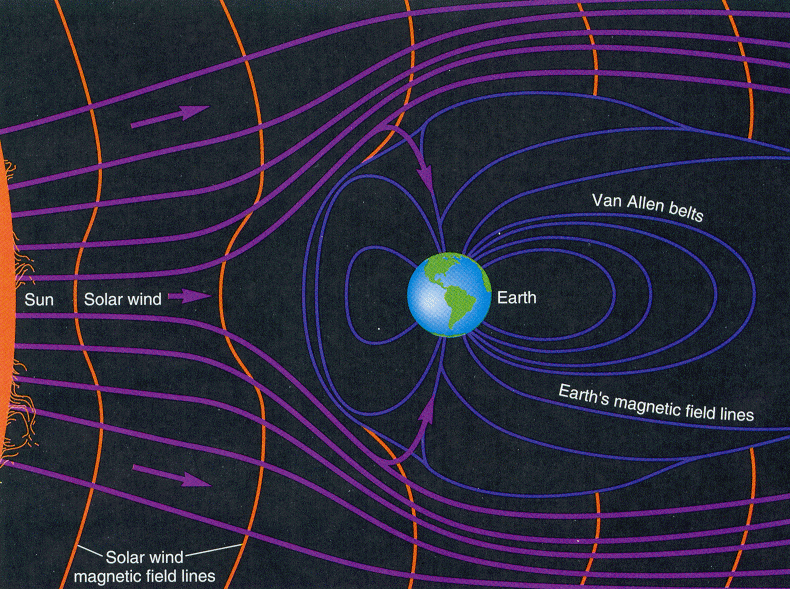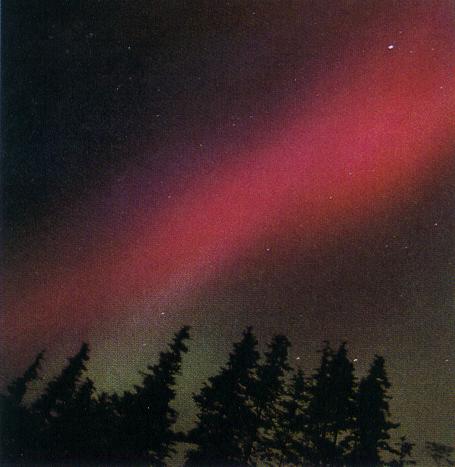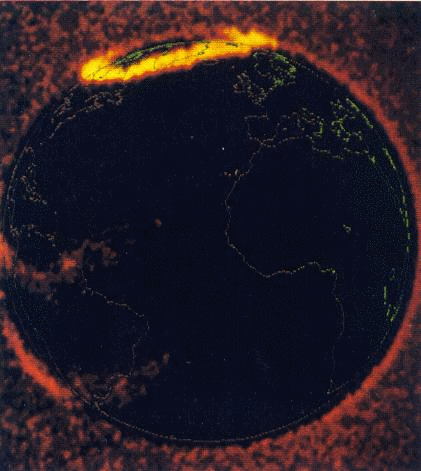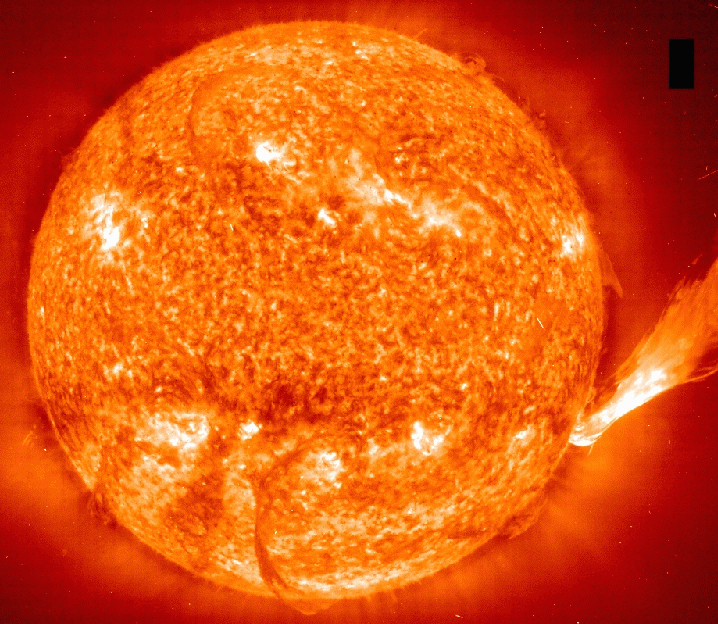
Solar Radiation and the Electromagnetic Spectrum
Any object that has energy will exhibit that energy as temperature (the average kinetic energy of an object). If an object does not have energy at all, it "will not have" a temperature; actually, it will, Absolute Zero! Absolute zero is achieved when there is no molecular energy in an object. This means that even electrons stop orbiting their nuclei...at least in theory.
All objects above absolute zero
radiate
energy that has electrical and magnetic properties and is therefore
called
Electromagnetic
Radiation or EMR. EMR may be understood in part as
behaving
as a wave. We need to know some properties of these waves.
An important property shown below is Wavelength.
Wavelength
is measured as the distance between successive wave crests or,
equivalently,
between successive wave troughs.

EMR exists in a continuous spectrum of wavelengths. Hotter objects emit short wavelengths while cooler objects radiate longer wavelengths. All EMR travels at the same speed regardless of wavelength. That speed is the Speed of Light. Since the speed of light is a constant, it is symbolized as "c." C is equal to 186,000 miles per second or about 300,000 kilometers per second. EMR may travel in a vacuum (unlike sound waves) which is why solar energy can travel the 94 million miles of space to reach the earth.
Another property of EMR waves is Frequency. Frequency is simply the number of waves to pass a point per time unit (typically 1 second). Numbers of waves per second are measured in Hertz (Hz). Since all EMR travels at the same speed, the only variable to influence frequency is wavelength. The shorter the wavelength, the higher the frequency. Frequency, in turn, relates to energy level and danger level. Short wave energy is of high frequency and of high energy level which make it dangerous. You will need to know the relationships summarized below.

Hint: Make sure you know the sequence of colors backwards and forwards and that you associate the end colors with wavelength (short versus long), frequency (high versus low), and energy level (high versus low).
Where the visible spectrum ends, Infrared radiation begins. The longer forms of infrared are sensible, that is we can feel them as warmth or "heat." The EM spectrum ends with Radio waves.
The diagram
below
shows the forms of EMR radiated by the sun and the earth.

There are some important observation
to make.
A view of ultraviolet radiation emissions from the sun: June 9, 2000.

You probably know already that
ultraviolet
(UV) radiation is harmful. You have most likely have had a
sunburn
once or twice in your life (so far!). Sunburn is caused by UV
from
the sun. Skin cancer is also related to excess UV exposure.
One of the great environmental problems facing us is increased UV
exposure
due to depletion of the Ozone Layer.
Image from the Stanford Solar Center:
http://www.solar-center.stanford.edu
Click here to go to Environment Canada to learn more about ozone depletion and increased UV exposure. Try to answer the following questions.
Solar Wind and the Auroras
The sun emits more than just EMR. The sun is also the source of high energy particles. These high energy particles are protons and electrons and they generally flow from the sun as a constant stream that is called Solar Wind. Follow this link to a press release from the European Space Agency and answer the following questions concerning solar wind.

The Magnetosphere is generated by the earth's metallic cores and it serves to protect life from being destroyed by the solar wind. Note how the flow of the solar wind is deflected around the planet. Not all of the particles in the solar wind are diverted around the earth, some are pulled toward the earth by the earth's lines of magnetic force. These high energy particles interact with the earth's upper atmosphere and create the Auroras.


The auroras appear as moving patches or curtains of color in the night sky (above left). The auroras are generally restricted to high latitude regions. Regions of auroral activity form halos around the poles (above right). Follow this link and answer the following questions.
